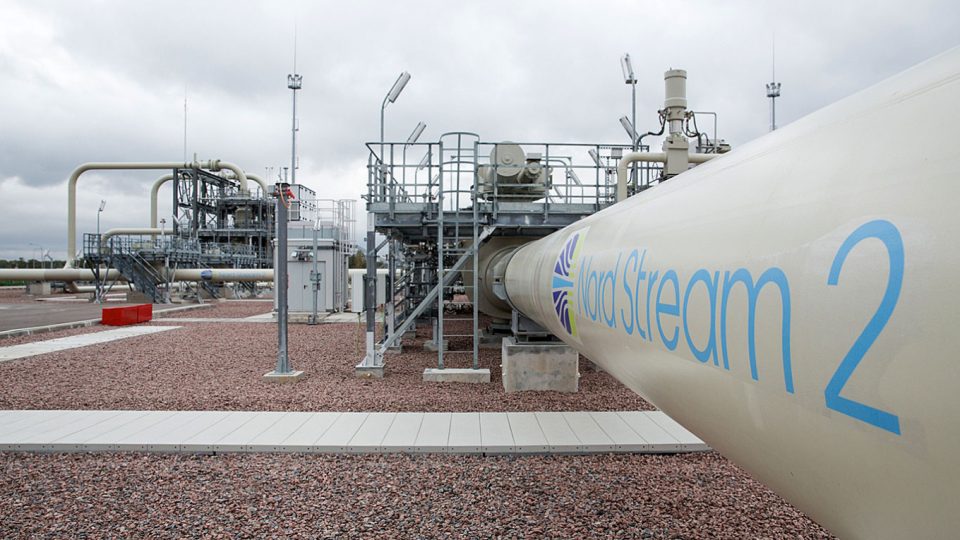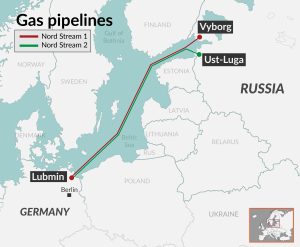
Europe’s dependence on Russian gas – and how it became a nightmare
Following Vladimir Putin’s decision to invade Ukraine, Europe is scrambling to wean itself from Russian energy. But it will be neither easy nor quick

Russia’s invasion of Ukraine has led to a humanitarian crisis, with thousands of civilians killed and more than 2.5 million people displaced from their homes. But beyond the human suffering, the crisis has shown just how dependent Europe has allowed itself to become on Russian energy, especially gas.
Russia accounts for 45 per cent of Europe’s gas imports. Despite the expansion of renewable energy over the past two decades, that dependency is increasing as countries across the continent shift to gas. Germany is particularly vulnerable, as it shut down nearly all of its nuclear power stations in the wake of the Fukushima disaster. The country’s entire gas consumption is covered by imports, around 55 per cent of which come from Russia.
Last week, EU leaders met at Versailles, France, to discuss plans to reduce Europe’s use of Russian fossil fuels. The European Commission had already signalled that it plans to slash use of Russian gas by two-thirds by the end of 2022, with a longer-term goal of ending imports of Russian energy by 2030.
A full-scale, immediate boycott has also been mooted, but Germany, along with other countries such as Austria and Hungary, is against the move. German Chancellor Olaf Scholz last week said: “At the moment, Europe’s supply of energy…cannot be secured in any other way.”
Scholz’s statement reveals a fundamental truth. In the short term, cutting off Russian gas will deliver a price shock. Course correction is a long-term endeavour. It will take most of the decade for the continent to wean itself from Russian supplies. Securing new supplies, and building capacities cannot be accomplished overnight.
Overland and undersea
Russia delivers natural gas to Europe through more than a dozen pipelines – three direct pipelines to Finland, Estonia and Latvia, four through Belarus (to Lithuania and Poland), and five through Ukraine (to Slovakia, Romania, Hungary and Poland).
But, in recent years, the real focus of diplomatic wrangling in western capitals has been the Nord Stream project, with one camp led by Germany and another by the US.
Since 2011, the twin pipeline system Nord Stream 1 has been supplying gas directly to Germany through the Baltic Sea. Construction on a major new pipeline running parallel to it, called Nord Stream 2, is complete. Also consisting of two lines, it would have doubled the total capacity of the Nord Stream system from 55 billion cubic metres (BCM) to 110 BCM per year. Its biggest champion in Germany was former chancellor Angela Merkel. Her predecessor in the chancellery, Gerhard Schröder, is a close friend of Russian President Vladimir Putin. He was on the board of Nord Stream AG, a subsidiary of Gazprom, the Russian gas giant. Germany’s leaders have long believed that positive (commercial) engagement with Russia is crucial to securing lasting peace on the continent.
Nord Stream 2 – at 1,230 km, the longest subsea pipeline in the world – “is now dead”, said US Undersecretary of State for Political Affairs, Victoria Nuland, as Russia escalated its attack on Ukraine. Following Russia’s invasion, Germany said it would not give regulatory permission to the project. Earlier this month, it was widely reported that Nord Stream 2 AG was considering filing for insolvency – reports the Swiss-based company later denied.
For critics of Nord Stream, the cancellation of the second pipeline comes as a relief. Ukraine especially saw it as a potential Russian noose around Kyiv’s neck, given its heavy dependence on gas transit taxes.

Project companies
Nord Stream 1 is operated by the special-purpose company Nord Stream AG, which is incorporated in Zug, Switzerland. Shareholders of the company are: Gazprom (51 per cent), Germany’s Wintershall Dea and PEG Infrastruktur AG (E.ON) (both 15.5 per cent), and The Netherlands’ Gasunie and France’s Engie (both 9 per cent). The managing director is Matthias Warnig and the chairman of the shareholders’ committee is Schröder.
Nord Stream 2 was developed and planned to be operated by Nord Stream 2 AG, a wholly owned subsidiary of Gazprom. It is also registered at Zug and has the same management as Nord Stream AG.
Cost and financing
According to Gazprom, the costs of the onshore pipelines in Russia and Germany were around 6 billion euros. The offshore section of the project cost 8.8 billion euros. A third of the financing was raised through equity provided by shareholders in proportion to their stakes in the project, while 70 per cent came from external financing by banks.
For Nord Stream 2, loans from Uniper, Wintershall Dea, OMV, Engie, and Royal Dutch Shell covered 50 per cent of the costs of 9.5 billion euros. Gazprom financed the rest.
Route
Nord Stream 1 runs from Vyborg, Russia, to Lubmin near Greifswald, German, through the Baltic Sea. It crosses the exclusive economic zones of Russia, Finland, Sweden, Denmark and Germany, as well as the territorial waters of Russia, Denmark, and Germany. The two 1,224-km pipelines are the most direct connection between the vast gas reserves in Russia and the EU energy markets.
Nord Stream 2 follows the route laid down by the Nord Stream pipeline and runs through the Baltic Sea from the St Petersburg region in Russia to Baltic Coast in north-east Germany. It traverses the territorial waters of five countries: Russia, Finland, Sweden, Denmark and Germany.


